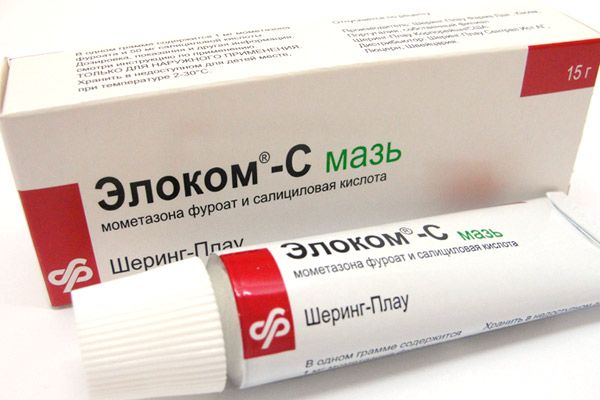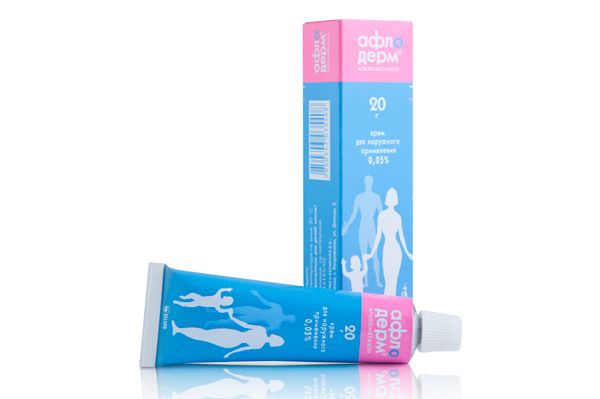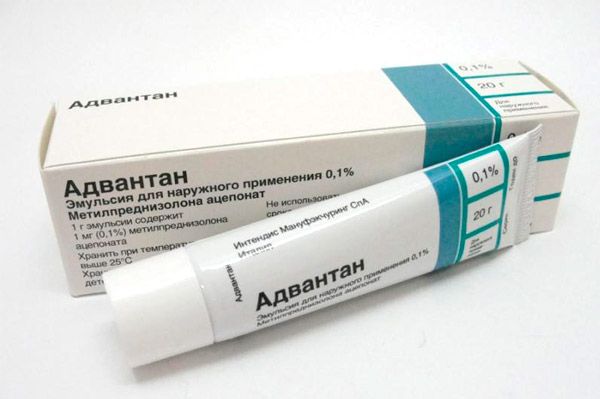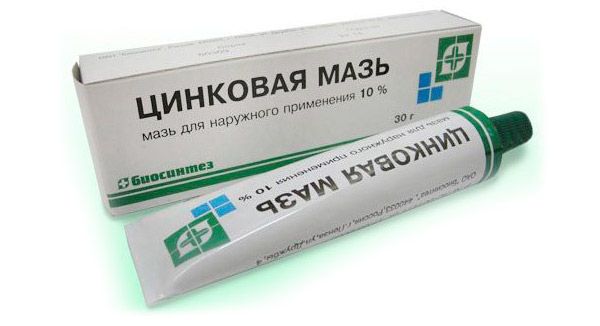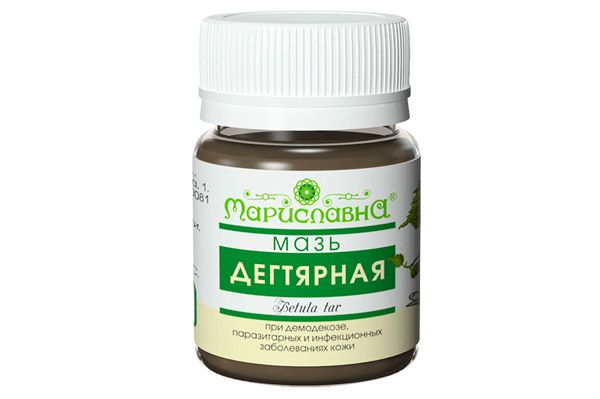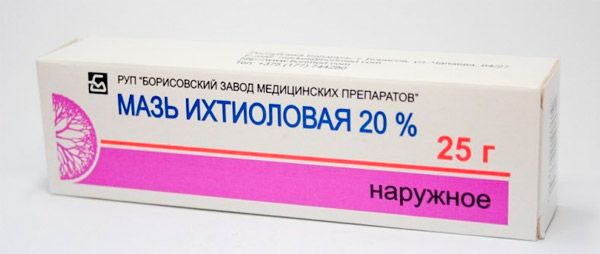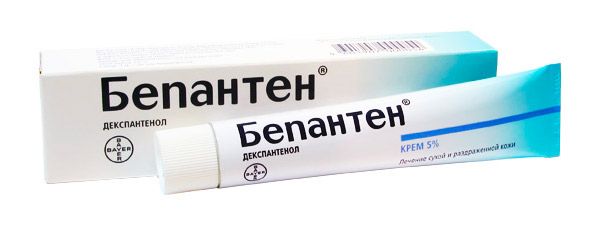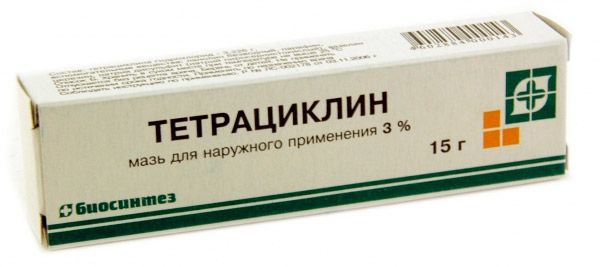Medical expert of the article
New publications
Preparations
Ointments for diathesis
Last reviewed: 04.07.2025

All iLive content is medically reviewed or fact checked to ensure as much factual accuracy as possible.
We have strict sourcing guidelines and only link to reputable media sites, academic research institutions and, whenever possible, medically peer reviewed studies. Note that the numbers in parentheses ([1], [2], etc.) are clickable links to these studies.
If you feel that any of our content is inaccurate, out-of-date, or otherwise questionable, please select it and press Ctrl + Enter.
Diathesis is a common manifestation of dermatitis, which is typical for children in the first years of life. The main signs of diathesis are pink flaky spots on the body (mostly on the face or legs), which cause a lot of discomfort to the baby. In this regard, parents often turn to the doctor with the question: is there an ointment for diathesis that would act quickly and effectively, without harming the child?
It is important to know that the cause of diathesis should be sought inside the small organism. Perhaps the appearance of spots is associated with dysbacteriosis, allergies or skin diseases. The provoking factor should be determined by a doctor who will prescribe the main treatment. The ointment will help get rid of rough islets on the skin, relieve itching and ease the baby's condition.
Indications for the use of ointments for diathesis
Ointments for diathesis are used in the acute stage of the process. Doctors can prescribe a drug from the following drug groups:
- hormonal corticosteroid ointments;
- non-hormonal anti-inflammatory ointments.
The doctor will decide which specific drug to use during the examination. Usually, for minor rashes, non-hormonal agents are prescribed - softening, moisturizing and healing ointments. For abundant itchy spots that occur with pronounced exacerbations, it is necessary to switch to more serious drugs - hormonal ointments.
When choosing a medication, it is imperative to pay attention to the fact that its composition does not cause an allergy in the baby. Before the first application of the ointment, a small amount of it is applied to the child's wrist area, after which a possible reaction is observed. If swelling or redness appears in this area within 24 hours, then it is better to refuse such an ointment.
Names of ointments for diathesis
- Hormonal ointments are considered more effective, but also more dangerous in childhood. Such ointments cannot be used without a doctor's prescription, that is, uncontrolled and for a long time, because this can significantly disrupt the skin structure. In addition, the effect of "addiction" may occur, after which it will be even more difficult to cure the disease.
Elokom
|
|
Pharmacodynamics and pharmacokinetics |
Ointment based on a synthetic topical steroid - mometasone. The active ingredient causes anti-inflammatory, antihistamine, antipruritic and vasoconstrictive effects. Systemic absorption is about 1%. |
Using ointments for diathesis during pregnancy |
Since there is no data on the effect of the ointment on pregnancy, its use during this period is not recommended. |
Contraindications for use |
Possibility of allergy. |
Side effects of ointments for diathesis |
Feeling of discomfort at the site of application, thinning of the skin, dryness, hypopigmentation. Less common – systemic manifestations in the form of inhibition of corticosteroid synthesis. |
Method of administration and dosage |
Use once a day. The therapeutic course should not be long. |
Overdose |
Inhibition of hormone synthesis, tissue atrophy. |
Interactions with other drugs |
No information available. |
Storage conditions and shelf life |
Under normal conditions, up to 3 years. |
Afloderm
|
|
Pharmacodynamics and pharmacokinetics |
An external preparation with the active component alclomethasone. Quickly relieves the main symptoms: redness, swelling, irritation. |
Using ointments for diathesis during pregnancy |
Use is not recommended. |
Contraindications for use |
Chickenpox, skin lesions caused by viruses, conditions after vaccinations, open skin lesions, tendency to allergic reactions. |
Side effects of ointments for diathesis |
Very rare – rash, dryness, skin atrophy. |
Method of administration and dosage |
It is used in children from 6 months, once a day. |
Overdose |
No information provided. |
Interactions with other drugs |
Not established. |
Storage conditions and shelf life |
Keep out of reach of children up to 3 years. |
Advantan
|
|
Pharmacodynamics and pharmacokinetics |
The active component of the ointment is methylprednisolone, which has a local anti-inflammatory effect. Systemic absorption is less than 1%. |
Using ointments for diathesis during pregnancy |
Not recommended for use. |
Contraindications for use |
Tendency to allergies, children under 4 months. |
Side effects of ointments for diathesis |
Discomfort at the site of application, allergic reactions. |
Method of administration and dosage |
Apply from 4 months of age, once a day. Duration of therapy – no longer than 4 weeks. |
Overdose |
Cutaneous atrophoderma. |
Interactions with other drugs |
No information. |
Storage conditions and shelf life |
Store for 3 years under normal conditions. |
Locoid
|
|
Pharmacodynamics and pharmacokinetics |
Corticosteroid ointment with hydrocortisone. |
Using ointments for diathesis during pregnancy |
Corticosteroids penetrate the placental layer, so their use is highly undesirable. |
Contraindications for use |
Damage to the integrity of the skin, vascular fragility, ichthyosis. |
Side effects of ointments for diathesis |
Dermatitis, skin atrophy, depigmentation, irritation. |
Method of administration and dosage |
Apply a thin layer once a day or every other day. |
Overdose |
It is manifested by an increase in side effects. |
Interactions with other drugs |
No interaction data available. |
Storage conditions and shelf life |
Store for 3 years at room temperature. |
- Non-hormonal ointments for diathesis should have anti-inflammatory, resolving, analgesic and antipruritic effects. Only in this case can positive results be achieved in treatment.
Zinc ointment
|
|
Pharmacodynamics and pharmacokinetics |
Zinc-based ointment with softening and protective action. It is believed that this drug is not absorbed into the systemic circulation. |
Using ointments for diathesis during pregnancy |
Not recommended without a doctor's prescription. |
Contraindications for use |
Tendency to allergies, purulent skin diseases. |
Side effects of ointments for diathesis |
Allergic reactions, redness, skin irritation. |
Method of administration and dosage |
Apply to clean and dry skin 2-3 times a day (necessarily at night). Duration of therapy is determined individually. |
Overdose |
It is considered unlikely. |
Interactions with other drugs |
No interactions have been established. |
Storage conditions and shelf life |
Store at room temperature for up to 4 years. |
Tar ointment
|
|
Pharmacodynamics and pharmacokinetics |
The tar preparation helps to eliminate signs of inflammation, reduce redness, and resolve infiltrates. |
Using ointments for diathesis during pregnancy |
Not recommended for use. |
Contraindications for use |
Allergies, severe kidney disease. |
Side effects of ointments for diathesis |
Skin irritation, folliculitis, allergic reactions. |
Method of administration and dosage |
Treat once a day until the problem disappears completely. |
Overdose |
Impaired renal function. |
Interactions with other drugs |
No information. |
Storage conditions and shelf life |
Store at room temperature for up to 24 months. |
Ichthyol ointment
|
|
Pharmacodynamics and pharmacokinetics |
Antiseptic ointment with analgesic, anti-inflammatory and bactericidal action. Does not enter the systemic circulation. |
Using ointments for diathesis during pregnancy |
Suitable for use by pregnant women. |
Contraindications for use |
Children under 12 years old. |
Side effects of ointments for diathesis |
Allergic reactions may rarely occur. |
Method of administration and dosage |
The ointment is applied 2-3 times a day, the duration of therapy is individual. |
Overdose |
It is considered impossible. |
Interactions with other drugs |
You cannot use several ointments on one skin area, especially those containing iodine and heavy metal salts. |
Storage conditions and shelf life |
At normal temperature, up to 5 years. |
Bepanten ointment
|
|
Pharmacodynamics and pharmacokinetics |
A healing agent based on dexpanthenol. It is absorbed quickly and excreted mainly in urine. |
Using ointments for diathesis during pregnancy |
There are no grounds for prohibiting the use of this drug. |
Contraindications for use |
Tendency to allergies. |
Side effects of ointments for diathesis |
Allergic reactions: rash, skin irritation, swelling. |
Method of administration and dosage |
Use as needed. There are no restrictions on use. |
Overdose |
The drug is non-toxic. |
Interactions with other drugs |
No information. |
Storage conditions and shelf life |
Stored under normal conditions for up to 3 years. |
Tetracycline ointment
|
|
Pharmacodynamics and pharmacokinetics |
Antimicrobial ointment with antibiotic. Low absorption rate. |
Using ointments for diathesis during pregnancy |
The effect of the ointment on pregnancy has not been sufficiently studied, therefore the use of the drug is not recommended. |
Contraindications for use |
Pregnancy, children under 8 years of age, tendency to allergies. |
Side effects of ointments for diathesis |
Redness, swelling. |
Method of administration and dosage |
Apply 3 times a day. The duration of therapy is determined by the doctor. |
Overdose |
No description. |
Interactions with other drugs |
The effect of the ointment is enhanced by erythromycin and nitrofuran drugs. |
Storage conditions and shelf life |
Store in the refrigerator, without freezing, for up to 3 years. |
Ointment for diathesis in children
Untimely measures for treating diathesis can lead to complications: indigestion, dermatitis, inflammatory processes. As a rule, antiallergic drugs, multivitamins and sedatives are prescribed for diathesis in children.
What ointment for diathesis can be used in children?
The most common drugs are:
- Fenistil
- Diathesis of the feet
- Cindol
- Skin-cap
- Baneocin
- Diprosalic
- Vipsogal
- Triderm
When choosing an ointment for diathesis for children under one year, it is necessary to take special care of the safety of the drug. Thus, at an early age, it is recommended to use light medications, for example, "La-Cree" or Bepanten. If there is a need to use hormonal ointments, then to reduce side effects, they are mixed with soft baby creams. Thanks to this technique, the child's skin will not be overdried.
Recipe for an ointment against diathesis from Yuri Longo
Many patients have heard of Yuri Longo, the "master of white practical magic", who was especially famous and in demand in the 90s of the 20th century. At one time, he conducted sessions of hypnosis, clairvoyance and even "resurrection", which were fashionable at that time.
Longo, in addition to his extrasensory activities, was also involved in treating the sick. His book, in which the "master" laid out a large number of medicinal tinctures, decoctions, etc., is still in great demand, despite the fact that its author has long since left this world.
The book also contains a recipe for eliminating the signs of diathesis. It is worth noting that the effectiveness of this medicine has not been tested and has no confirmation from official medicine, so you should treat it with caution. In addition, many folk remedies using medicinal plants themselves can cause allergies, which can significantly worsen the situation with diathesis.
How to prepare Longo's medicine:
- take 20 g of immortelle herb, 20 g of yarrow, 10 g of mint leaves, 10 g of wormwood, 10 g of fennel fruits;
- pour 2 tbsp of the mixture into 400 ml of boiling water;
- place in a water bath for a quarter of an hour;
- leave for half an hour, filter;
- apply compresses three times a day.
The best ointments for diathesis
Hormonal ointments for diathesis become more effective and safer with each generation, as the concentration of the hormone in them is artificially reduced. Moreover: ointments developed in recent years have a longer effect. However, despite this, such drugs should be used infrequently and only under the supervision of a doctor.
Now pharmacies offer an excellent selection of non-hormonal external agents aimed at treating small children. A doctor or pharmacist will help you choose an ointment. However, you should not forget that an ointment for diathesis helps to eliminate only the external manifestations of the disease. Therefore, you need to determine the true cause of the disease together with your doctor and eradicate it. Only in this case can you confidently get rid of diathesis.
Attention!
To simplify the perception of information, this instruction for use of the drug "Ointments for diathesis" translated and presented in a special form on the basis of the official instructions for medical use of the drug. Before use read the annotation that came directly to medicines.
Description provided for informational purposes and is not a guide to self-healing. The need for this drug, the purpose of the treatment regimen, methods and dose of the drug is determined solely by the attending physician. Self-medication is dangerous for your health.


 [
[ 